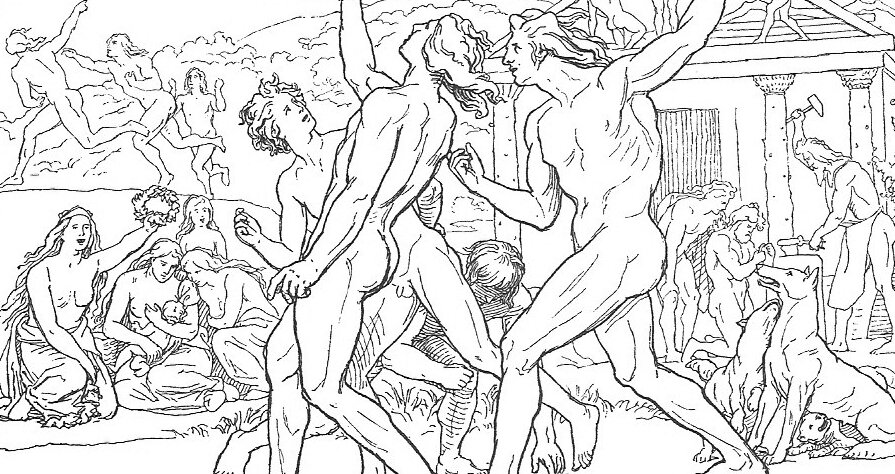In Old Norse, the Æsir are the principal gods of the Norse pantheon. Although the Vanir form another tribe containing gods, “Æsir” is often used in Old Nordic literature to represent the two groups. The principal members of the pantheon are Odin, Thor, and Loki.
Æsir is pronounced “ice-ear” with stress on the first syllable. It is a plural noun and means “multiple gods” in Old Norse; Ásynjur is the feminine equivalent. The masculine singular form is Áss, and the feminine singular is Ásynja.
What Does the Name Æsir Mean?
The word “Æsir” almost certainly came from one of two Proto-Germanic words: ansuz, meaning life or vitality, or ansaz, meaning a pole or beam.
Life and vitality tie in with the ethos that gods would want to portray, and poles or beams indicate support and structure, which would be important concepts for gods to provide.
Many Old Norse words use the prefix or suffix “as” to add a divine meaning to the rest of the word.
Examples of these words include:
- Asgard – gods’ enclosure
- Asbrú – sacred bridge or rainbow (the Bifrost)
- Landâs – nation’s god
- Aska – thunder (from the word “āsaekia,” meaning “divine chariot ride” and connected to Thor
The “as” (or áss) is their most important god, Odin.
What Do the Æsir Represent?
Although many of the Æsir gods of non-bellicose, their overall association is with battle, war, and achieving power throughout the nine realms.
The Vanir, on the other hand, mainly appear in relation to cultivation and fertility.
Æsir Vs. Vanir
To understand clearly the difference between the Æsir (from Asgard) and the Vanir (from Vanaheim), you must first look at their universe.
Norse mythology dictates nine realms sit in the branches or the roots of Yggdrasil, the World Tree.
Of these nine, six are constant and feature in every image or description of the realms: Asgard, Alfheim, Vanaheim, Midgard, Jotunheim, and Muspelheim. The other three are a selection of Svartalfheim and Niðavellir or Hel and Niflheim. Svartalfheim and Niðavellir are sometimes combined, as are Hel and Niflheim.
According to Norse cosmology, Vanaheim is the realm of the Vanir, gods associated with soothsaying, fertility, magic, and wisdom.
According to legend, Asgard lies in the sky and has as many as 12 different regions, one of which is Valhalla (the halls of warriors who died a glorious death in battle), for example. The main part of Asgard is, by all accounts, a gigantic fortress. Thor’s palace, Thrudheim, Baldr’s hall, Breidablik, and Heimdall’s home, Himinbjorg (or “Heaven’s Cliffs”), are all in Asgard.
In summary, it is the home of the gods and slain warriors.
Æsir Gods
1. Odin (also known as Woden and Óðinn)
Odin is the supreme deity in Norse myth and the Allfather of the Æsir.
Odin was the son of Bestla and Borr (son of Búri, one of the first gods) and had two brothers, Vili and Vé. He fathered many sons, the most famous of whom were Thor (with Jord) and Baldr (with Frigg). He was not Loki’s biological father.
His thirst for wisdom saw him hang from the World Tree, Yggdrasil, for nine days and nine nights until he became blessed with the knowledge of the runic alphabet. He also sacrificed an eye to obtain wisdom from the sage jotunn Mimir. Odin later beheaded the giant and carried his head around, listening to the knowledge and advice the jotunn still imparted.
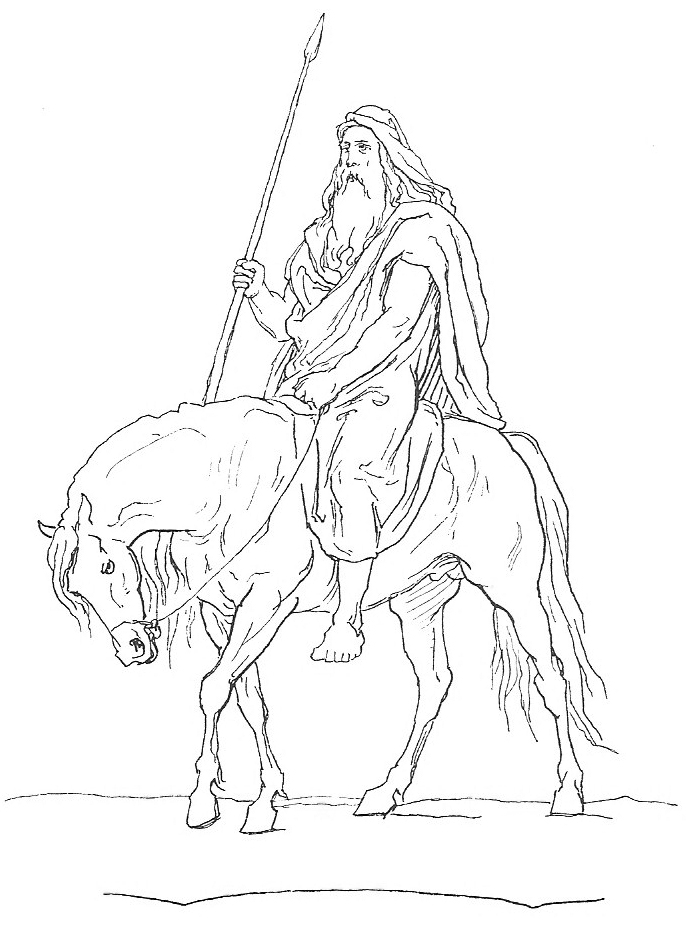
Odin often appears wielding his spear, Gungnir, and next to the ravens Huginn and Muninn (who bring him information from Midgard) and the wolves Geri and Freki. He rides the eight-legged steed Sleipnir across the skies.
Odin, Vili, and Vé created the Earth (also personified as the goddess Jord) from the giant Ymir’s corpse. His blood made the seas, his bones the mountains, his hair the trees, his brains the clouds, and his skull the heavens. His eyebrows became the protective boundary around Midgard.
In addition, a stanza in the poem Gylfaginning tells how Ymir’s flesh created the first dwarfs.
2. Thor
Thor was Odin’s best-known son and the second most famous god. He was the protector of humanity in Midgard and, of course, the mighty god of thunder.
Thor used a hammer called Mjölnir, representing bravery, strength, and healing.
3. Loki
The trickster god Loki was the god of mischief. He was a shapeshifter, taking the form of animals like a horse, fly, or salmon.
He tricked the blind god, Hodr, into killing Baldr, Hodr’s brother and Odin’s son. Frigg had used a magic spell on Baldr, making him impervious to any material. However, Loki discovered that the mistletoe was the only thing that could hurt Baldr and had Hodr throw a mistletoe spear at Baldr, killing him.
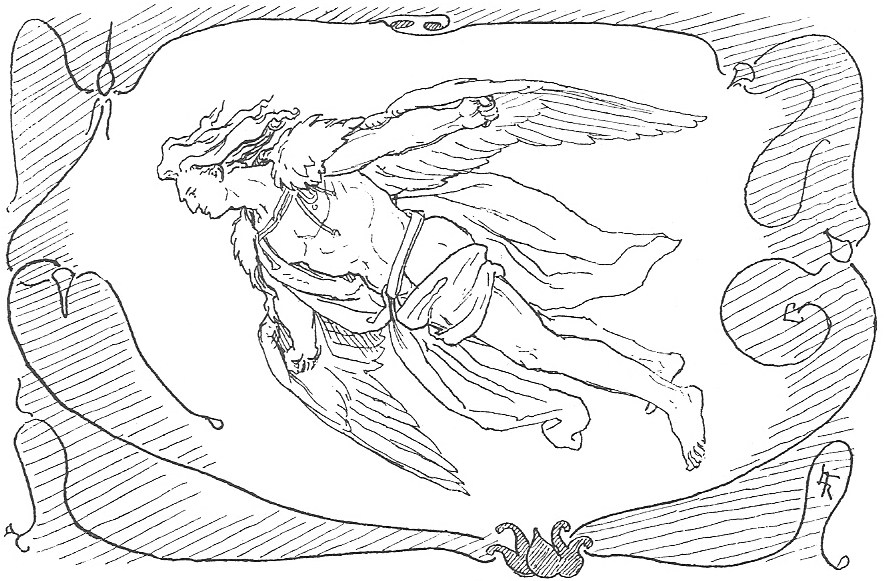
Loki is the son of Fárbauti (a jötunn) and the goddess Laufey. He fathered three nightmarish children with the jötunn Angrboða: Hel, the goddess of the underworld or the dead; Fafnir, the giant wolf prophecized to kill Odin during Ragnarök; and Jörmungandr, the huge, poisonous serpent that circled the realm of Midgard, submerged in the sea.
In one story, the stallion Svaðilfari impregnated Loki while he was transformed into a mare. He later gave birth to Odin’s horse Sleipnir.
4. Frigg
Odin’s wife, Frigg, was a soothsayer and the goddess of love, beauty, and fertility. As Odin’s wife, she was a powerful and formidable character.
She was a loving mother and tried to protect her son Baldr from ever coming to any harm. She held her own with Odin, tricking him on one occasion by convincing him a group of women were men by having them pull their long hair over their faces to resemble beards.
Some stories depict her as not being a faithful wife to Odin, although there are extenuating circumstances surrounding one of these events.
5. Baldr
Odin and Frigg were the parents of the “gleaming god” of light Baldr (or Balder). He was also the god of joy and purity and the father of Forseti, the god of justice.
All gods and human beings loved him as he was so generous, handsome, and a good person.
The Gylfaginning, from the Prose Edda, a compilation of Old Norse texts by the Islandic politician, historian, and poet Snorri Sturluson mentions Baldr’s ship Hringhorni as the finest ever made. Breiðablik, his abode in Asgard, is exceptionally beautiful.
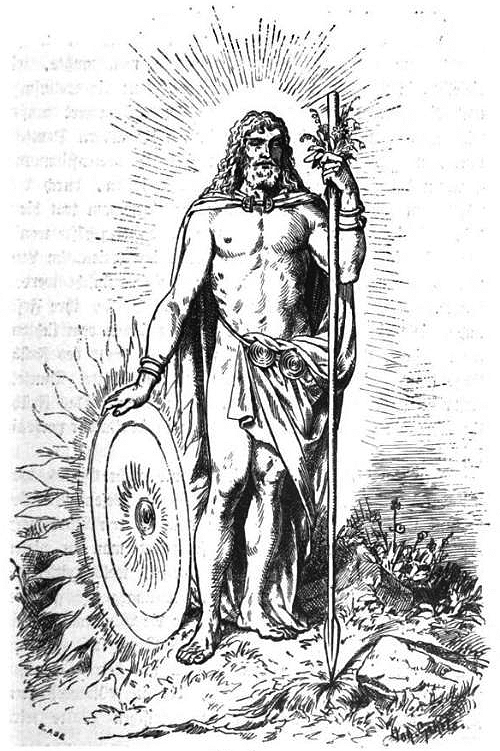
Baldr’s mother made him invincible to attack from anything but mistletoe. Loki tricks Baldr’s brother, Hodr, into throwing a mistletoe spear at him, killing him instantly. Asgard is sent into mourning by this event, with Baldr’s wife, Nanna, even killing herself when she receives the news.
6. Hodr
Hodr also spelled Hod, Höd, Hoder, Höðr or Hodur, was the blind Norse god of the night. He was a son of Odin and Frigg and brother to Baldr and Hermod.
Loki tricks him into killing the adored god Baldr with a spear made of mistletoe. Odin fathers Váli with the giantess Rindr – Váli matures fully in one day and kills Hodr.
7. Idun
Next to Frigg and Freyja, Idun is the best-known female goddess in Norse legend. She is the wife of Bragi, the god of poetry and the guardian of the magical apples that maintained the youth and vigor of the Æsir, the gods of the most important pantheon in Viking and Old Norse religion.
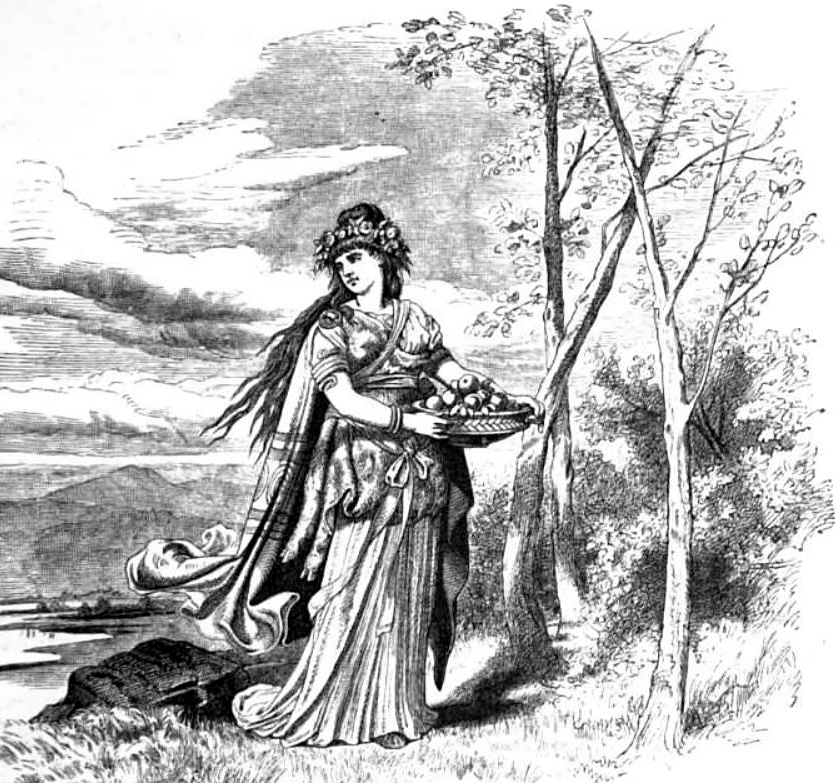
She was involved in a tremendous adventure with Loki, who had allowed the jötunn Þjazi to kidnap her because he wanted her apples of eternal youth. However, the Æsir gods told Loki to rescue her, which he did while transformed into a falcon, turning her into a nut so he could carry her more easily.
8. Heimdall
Heimdall lived in a hall in Asgard called Himinbjörg and was the gatekeeper of the Bifrost (the rainbow bridge that linked Asgard and Midgard). He was always alert to guard the realm of the gods against attack.
He had keen eyesight and hearing and could also see into the future. He is described as having teeth of gold and being “the whitest of gods.”
Heimdall uses the horn Gjallarhorn and rides a horse with a golden mane called Gulltoppr. His parents are Odin and the Nine Mothers of Heimdallr.
Loki and Heimdall clashed on a couple of occasions. The first was when Heimdall recovered Freyja’s treasured necklace Brísingamen, which he obtained while transformed into a seal. They also do battle during Ragnarök, finally killing each other.
9. Ullr
Ullr is often called the god of winter and skiing, although the Prose Edda does not mention these facts. He lives in a little-known place called Ýdalir, and there are accounts of him replacing the “god of summer,” Odin, during the winter months.
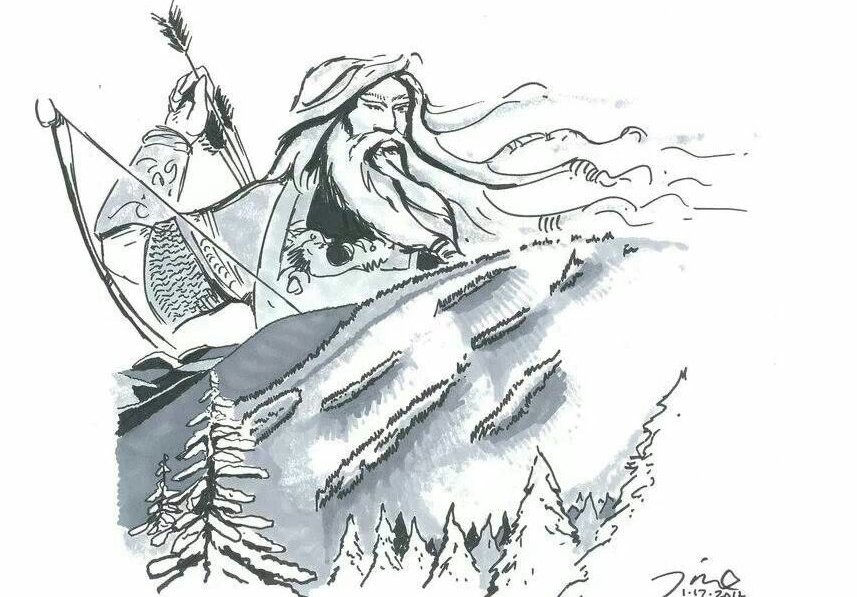
Chapter 31 of Gylfaginning from the Prose Edda refers to Ullr as a son of Sif, which means he is Thor’s stepson.
10. Tyr
Tyr is often cited as the god of war in Germanic mythology. Tyr sacrificed a hand to the monstrous wolf Fenrir, allowing the wolf to be captured and chained. Ragnarök predicted the wolf or dog called Garmr would kill and devour Tyr during the battle.
“Tuesday” comes from the Old English word tīwesdæg, which means ‘day of “Tyr.”
11. Vidar
Vidar is god of vengence and the son of Odin and the jötunn Gríðr. He avenges his father’s death during Ragnarök by killing the giant wolf Fenrir.
Vidar is one of the few gods that survived this end of days. In Prose Edda’s Gylfaginning, Vidar is described as a “silent god” and is almost as mighty as Thor.
12. Bragi
Bragi is traditionally known as the god of poetry (or Skáld) and music in Norse mythology. He was famous for his wisdom and mastery of words, not to mention for having the most extensive knowledge of poems and songs in the nine realms.
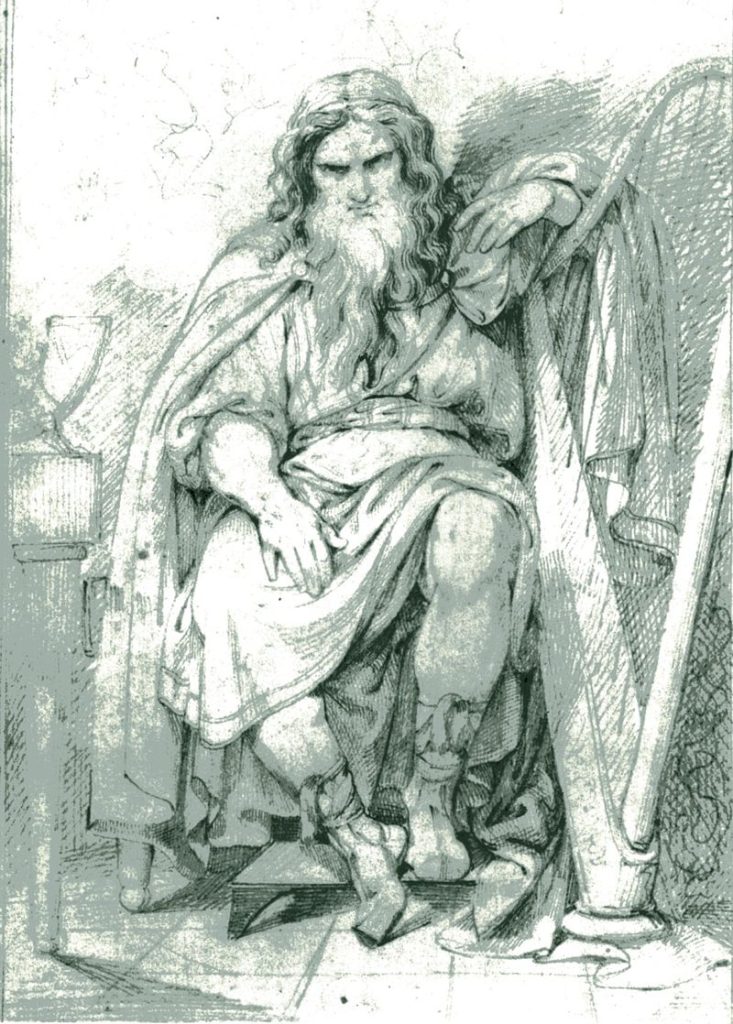
13. Vili and Vé
Vili is the god of wit and the brother of Odin and Vé. Vé is the god of the sea who once bested Odin in a duel. He was sent to the underworld as punishment.

